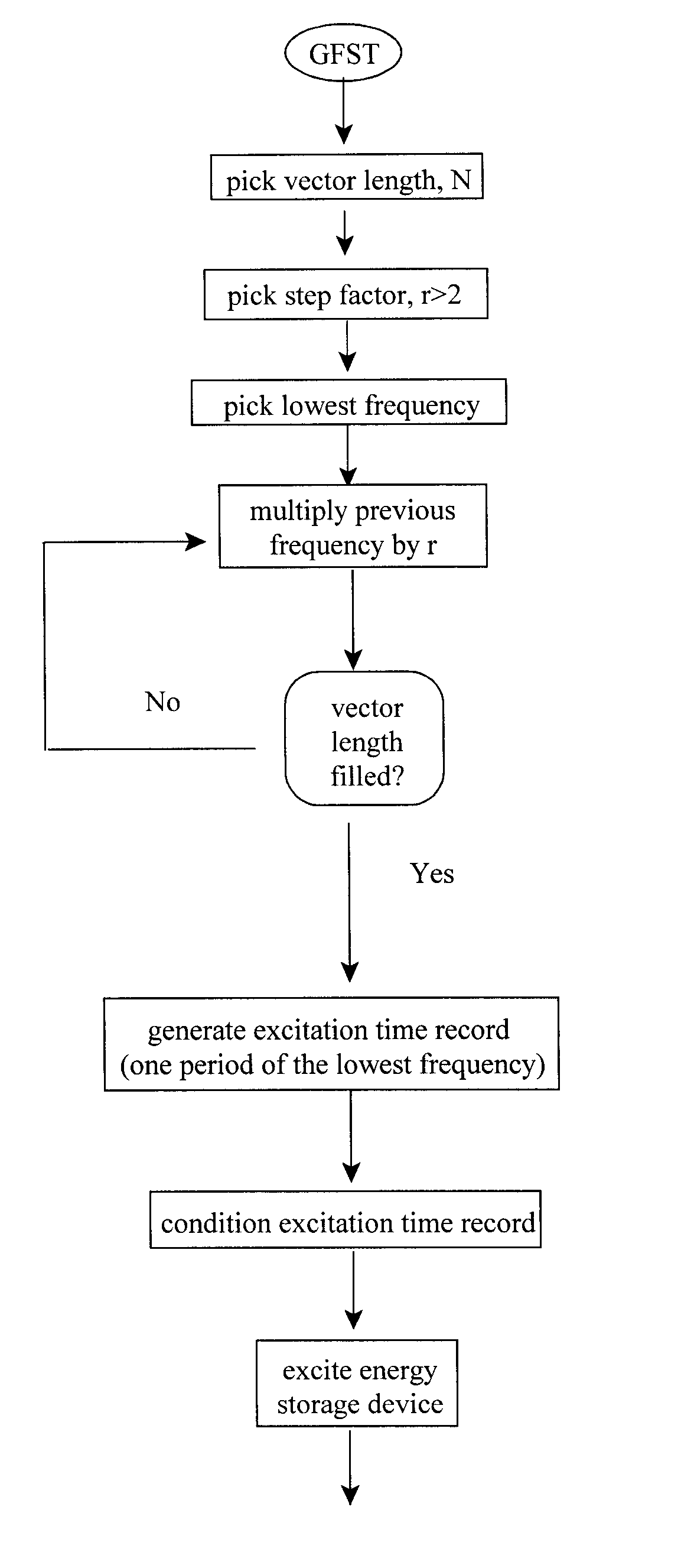Method of detecting system function by measuring frequency response
a technology of frequency response and system function, applied in the direction of pulse characteristics measurement, instruments, testing circuits, etc., can solve the problems of time-consuming and expensive laboratory equipment, and achieve the effect of reducing time-consuming summation transformation
- Summary
- Abstract
- Description
- Claims
- Application Information
AI Technical Summary
Benefits of technology
Problems solved by technology
Method used
Image
Examples
Embodiment Construction
[0013]A method of the subject invention allows for rapid measurement of the impedance for energy storage devices. It has been shown that shifts in the impedance spectra, as a function of time and use, strongly correlate to the health of, for example, battery technologies (Christophersen et al., “Electrochemical Impedance Spectroscopy Testing on the Advanced Technology Development Program Lithium-Ion Cells,”IEEE Trans. Veh. Technol., 56(3). 1851-1855, 2002). Therefore, the subject method provides information about energy storage devices that is critical for onboard diagnostics and state-of-health estimation. The subject method measures a frequency response of an ESD (e.g., a battery) by exciting it with an SOS signal consisting of a number of select frequencies, and then capturing a response time record. The data are processed to obtain the impedance at each frequency in interest.
[0014]The desired frequencies are assembled as an excitation time record that can consist of a sum-of-sin...
PUM
 Login to View More
Login to View More Abstract
Description
Claims
Application Information
 Login to View More
Login to View More - R&D
- Intellectual Property
- Life Sciences
- Materials
- Tech Scout
- Unparalleled Data Quality
- Higher Quality Content
- 60% Fewer Hallucinations
Browse by: Latest US Patents, China's latest patents, Technical Efficacy Thesaurus, Application Domain, Technology Topic, Popular Technical Reports.
© 2025 PatSnap. All rights reserved.Legal|Privacy policy|Modern Slavery Act Transparency Statement|Sitemap|About US| Contact US: help@patsnap.com



